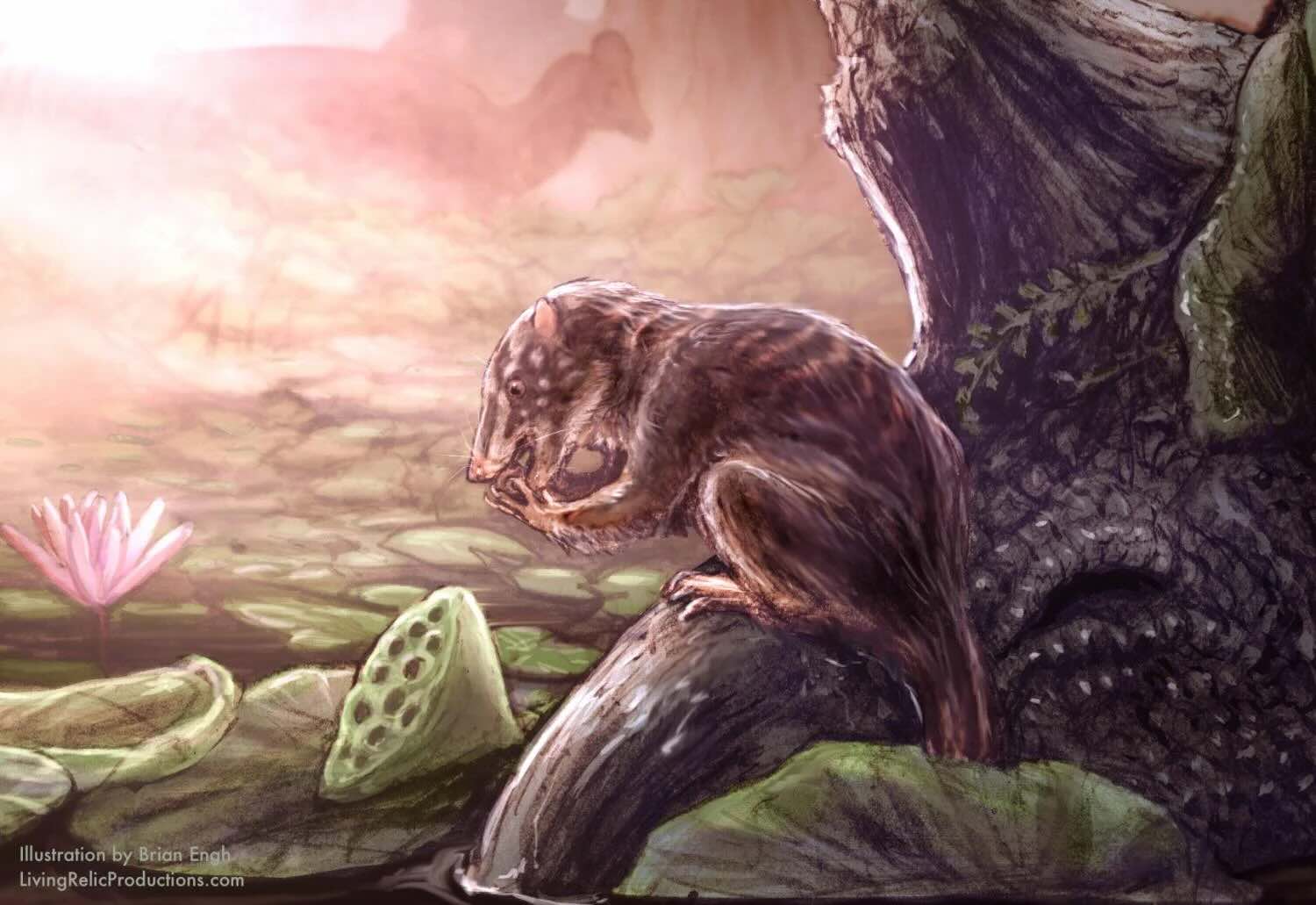Paleontologists have discovered a previously unrecognized hairy “swamp dweller” in Colorado that thrived during the dinosaur era.
The University of Colorado team behind the discovery says the new fossil discovery was unearthed near Rangely, Colorado, where they have been digging for fifteen years. The creature was formally named Heleocola piceanus, meaning “vertebrate swamp dweller. “
Rise of the Swamp Dweller
“I said, ‘Holy cow, that’s huge,'” recalled John Foster, of Vernal Utah’s Field House of Natural History State Parkland Museum and co-author of the paper revealing their findings, as the creatures’ jaw emerged from the dust.
The hairy creature this jaw belonged to once roamed Colorado between 70 and 75 million years ago. Today, the swamp creature’s fossil remains include a handful of teeth that helped the team identify it as a marsupial-like creature about the size of a muskrat, which primarily consumed a diet of plants supplemented with small insects and other tiny animals.
While small compared to its saurian neighbors, this creature was unusually large for a Late Cretaceous mammal. It likely weighed at least two pounds, making it larger than most of its contemporaries.


In the age of the dinosaurs, the early ancestors of modern mammals tended to be small creatures about the size of today’s mice and rats. Despite their size, these creatures played important roles in their ecosystems.
“They’re not all tiny,” conceded Prof. Eberle, curator of fossil vertebrates at the CU Museum of Natural History. “There are a few animals emerging from the Late Cretaceous that are bigger than what we anticipated 20 years ago.” Among the examples is the Didelphodon, a fossil believed to belong to a mammal that weighed about 11 pounds.
The swamp-dwelling Heleocola piceanus would have known a very different Colorado 70 million years ago, with much of the American West covered by an inland sea. The land surrounding that sea would have likely been marshy and full of estuaries, swamps, floodplains, and beaches. At that time, the region’s other inhabitants would have included turtles, duck-billed dinosaurs, and giant crocodiles; a far cry from the cool, dry climate Colorado enjoys today.
“The region might have looked kind of like Louisiana,” explained Rebecca Hunt-Foster, a study co-author. “We see a lot of animals that were living in the water quite happily like sharks, rays and guitarfish.”
Fortunately, those marshy conditions left some excellently preserved fossils that researchers frequently discover today, and Colorado is a prime spot for fossil hunting.
“Colorado is a great place to find fossils, but mammals from this time period tend to be pretty rare,” Prof. Eberle said, noting that most specimens that have been uncovered constitute little more than isolated teeth.
Still, the Williams Fork Formation on the Douglas Creek Arch, where the new swamp dweller fossil originated, has generated many discoveries, including dinosaurs, giant crocodilians, lizards, turtles, fishes, and mammals, all of which have been preserved in the local fossil record.
Dr. Hunts-Foster cautions visitors to the region not to remove any fossils discovered in the area themselves. Doing so may lead to the loss of important scientific information since the original context of the piece and how it was situated is lost. Instead, she recommends taking a photo of the fossil and bringing it to a museum or public land agency in the area. From there, scientists can make the most of the discovery, improving our knowledge of the ancient past.
“It’s a small town, but, in my experience as a paleontologist, a lot of cool things come out of rural environments,” Eberle said. “It’s nice to see western Colorado have an exciting discovery.
“We have scientists that come from all over the world specifically to study our fossils,” she said. “We really are lucky.”
The paper “A New Late Cretaceous Metatherian from the Williams Fork Formation, Colorado” appeared in PLOS ONEon October 23, 2024.
Ryan Whalen covers science and technology for The Debrief. He holds a BA in History and a Master of Library and Information Science with a certificate in Data Science. He can be contacted at ryan@thedebrief.org, and follow him on Twitter @mdntwvlf.

